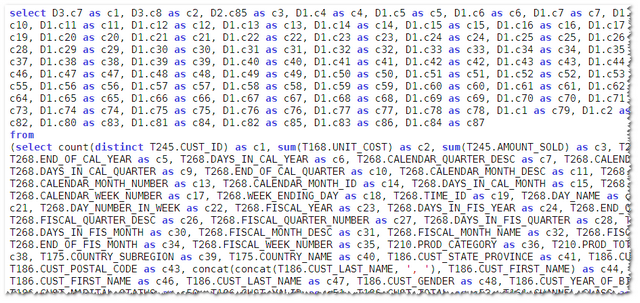My first presentation - help!
I’m doing my first ever conference presentation next month at the 2010 Rittman Mead BI Forum.
My presentation is called Performance Testing OBIEE, which is something I’ve spent a lot of time working on over the last few months. I think the challenge is going to be distilling it all into a session that’s not going to overwhelm everyone or bore them to death! Well, actually, the challenge is going to be the presenting. I can talk geek one-on-one, but talking to a whole bunch of people, not wittering but staying focussed, holding their attention….uh oh.
 The username against the SQL is the generic User ID that you had created for connections to the database from OBIEE.
The username against the SQL is the generic User ID that you had created for connections to the database from OBIEE. )
) A very interesting new PDF from Sun on deploying OBIEE has been published, with discussions on architecture, performance and best practice.
A very interesting new PDF from Sun on deploying OBIEE has been published, with discussions on architecture, performance and best practice.